
Microprocessor vs. Microcontroller vs. System on Chip: What are the differences among them?
August 10 2023  1742
1742
Inquiry
Global electronic component supplier AMPHEO PTY LTD: Rich inventory for one-stop shopping. Inquire easily, and receive fast, customized solutions and quotes.
QUICK RFQ
ADD TO RFQ LIST
Microprocessors, microcontrollers, and systems on chip (SoCs) are the three primary categories of computing platforms in the field of electronics. The ideal option for a given application will rely on the exact requirements of that application because each type of platform has strengths and drawbacks of its own.
What is a Microprocessor?
A microprocessor is a type of central processing unit (CPU) used in computers to carry out logical and mathematical processes as well as instructions. The "brain" of a computer or other electronic device is an integrated circuit. Microprocessors are in charge of fetching, decoding, and executing the instructions of a computer program. They are typically found in desktop and laptop computers, smartphones, and other electronic gadgets. Microprocessors, in contrast to microcontrollers, are frequently employed in systems that demand for general-purpose computing capabilities and are not specifically intended to perform control-related tasks.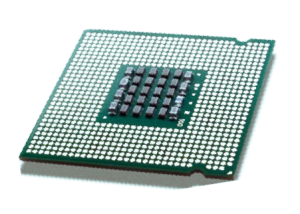
Microprocessor Architecture
- The control unit is responsible for fetching instructions from memory and decoding them into machine code.
- The arithmetic logic unit (ALU) performs mathematical operations and logical comparisons.
- The registers are used to store data and instructions.
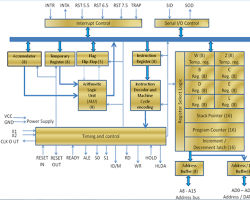
What is a Microcontroller?
A microcontroller is a little computer that consists of a single integrated circuit (IC), which also houses memory, programmable input/output (I/O) peripherals, timers, counters, and other components. It offers the bare minimum in terms of processing power, memory, and interfaces. In comparison to SoC packaging, the microcontroller's peripherals are less specialized. MCUs, which are also known as microcontrollers or microcontroller units, are frequently employed in small embedded control systems or control applications.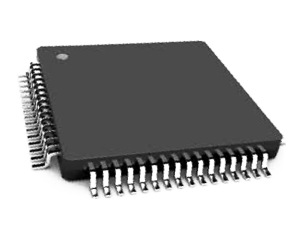
Microcontroller Architecture
- The CPU is responsible for executing instructions.
- The memory is used to store data and instructions.
- The input/output (I/O) ports are used to connect the microcontroller to other devices.
- The timers are used to measure time intervals.
- The analog-to-digital converter (ADC) is used to convert analog signals to digital signals.
- The digital-to-analog converter (DAC) is used to convert digital signals to analog signals.
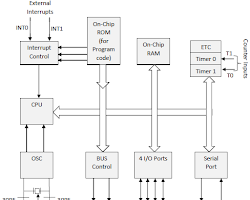
What is a System on Chip (SoC)?
SoC is a term with less definitions. Everything that used to require numerous chips can now be accomplished with a single chip package. A SoC often encapsulates one or more CPUs, RAM, microcontrollers, DSPs, accelerators, and supporting hardware; nevertheless, it does not follow any standards governing the circuitry it contains. Applications with complicated requirements that can't be handled by a single MCU should use a SoC. A SoC may contain several microcontrollers. It is more like an entire computer system on a single chip, capable of carrying out complicated tasks with more demanding resource requirements. It can be shortened to SoC or SOC.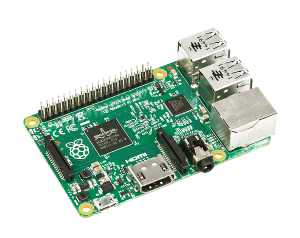
System on Chip Architecture
- The CPU is responsible for executing instructions.
- The memory is used to store data and instructions.
- The I/O ports are used to connect the SoC to other devices.
- The secondary storage is used to store data that is not currently being used by the SoC.
- The peripherals are additional components that can be integrated onto the SoC, such as graphics processing units (GPUs), networking controllers, and sensors.
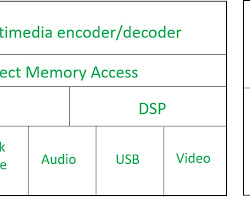
Video related to Microprocessor vs. Microcontroller vs. System on Chip
Microprocessor vs. Microcontroller vs. System on Chip: Advantages and Disadvantages
Advantages and Disadvantages of Microprocessor
Advantages of Microprocessor- Small size
- High speed
- Little power usage
- Transportable
- Really trustworthy.
- Lower heat production
- The microprocessor is extremely flexible.
- Its speed, which is essentially measured in Hertz, is determined by the CPU. As an illustration, a microprocessor with a measured speed of 3 GHz, also abbreviated as GHz, can complete 3 billion processes per second.
- The microprocessor has the ability to transfer data between different memory locations fast.
- It exclusively uses machine language and has a high overall cost.
- All of the components must be assembled on a big PCB.
- The product has a large physical size.
- It takes more time to create an entire product.
- The system uses a discrete component, but it is unreliable.
- The majority of microprocessors don't support floating point operations.
- The processor's data size is limited, thus it shouldn't make touch with any other external devices.
- There are no internal peripherals, such as ROM, RAM, or other I/O devices, on the microprocessor.
Advantages and Disadvantages of Microcontroller
Advantages of Microcontroller- Low time investment in the operation.
- It is simple to use, and system maintenance and troubleshooting are also easy.
- Many jobs are frequently completed at the same time, saving the human impact.
- Because the processor chip is so small, adaptation happens.
- System size and cost are smaller.
- Additional RAM, ROM, and I/O ports can easily be interfaced with a microcontroller.
- Microcontrollers cannot be reprogrammed after they have been programmed.
- If the digital components were missing, it would resemble a microcomputer.
- Typically, it is used in micro equipment.
- Its structure is intricate.
- A superior power device cannot be directly interfaced with by a microcontroller.
- There are a set number of executions.
- There are problems since not all microcontrollers have analog I/O.
- Static electricity has the potential to harm microcontrollers because they are made of complementary metal-oxide-semiconductors (CMOS).
Advantages and Disadvantages of System on Chip
Advantages of System on Chip- It is lighter since it is smaller in size.
- Greater performance and flexibility as a result of more circuits per chip
- Application-specific SoCs may be economically advantageous.
- Decreased power consumption and increased system dependability
- Greater hardware and firmware design security is offered by SoC.
- Because its processors and memory operate at high speeds, SoC offers speedier execution.
- Significantly shorter system cycle time overall and higher performance levels
- Design and development have a hefty upfront cost. The price per SoC will be quite expensive if there are few SoCs.
- You cannot just swap out a single component of these highly integrated systems; the entire SoC must be changed. A single damaged transistor or system could end up being quite expensive.
- Complexity grows when all systems are integrated onto one chip. The most challenging aspect of SoC designs is figuring out how to pack a significant amount of logic onto a single chip.
- Applications that require a lot of electricity are not appropriate.
- There is little visibility into the SoC.
- Pressures on time to market and testability.
Microprocessor vs. Microcontroller vs. System on Chip Applications
Microprocessor Applications
- Mobile phones and televisions both use it.
- It is a component of calculators and gaming devices.
- It is utilized by data collecting systems and accounting systems.
- It is applied in military settings.
- Control of traffic lights also makes use of it.
- PCs use microprocessors as its central processing unit.
- In LASER printers, the microprocessor is employed for fast printing and automatic photo copying.
- In addition to being utilized in digital telephone sets, modems, and telephones, microprocessors are also used in rail and airline reservation systems.
- The microprocessor measures blood pressure and temperature in medical equipment.
Microcontroller Applications
- Devices for detecting and manipulating light
- Instruments used in industry
- Devices for process control
- Instruments used in industry
- Measurement of rotating objects
- Current gauge
- Portable measuring devices
System on Chip Applications
- Smartphones: The central processing unit (CPU), memory, I/O ports, and graphics processing unit (GPU) required to operate the operating system and apps are all provided by SoCs in smartphones.
- Tablets: The same functionality as smartphones is offered by SoCs in tablets, but with a larger screen and more battery life.
- Wearable tech: SoCs are used to provide the processing power and memory required to operate apps and sensors in wearable tech, such as smartwatches and fitness trackers.
- IoT devices: To offer the connectivity and processing power required to gather and transfer data, SoCs are utilized in IoT devices, such as smart home appliances and industrial sensors.
- Drones: In order to provide the processing power and memory required to control the flying, sensors, and cameras of the drone, SoCs are utilized in drones.
- The processing power and memory required to render the virtual or augmented reality content are provided by SoCs in virtual reality (VR) and augmented reality (AR) headsets.
Choosing the Right Platform
The ideal option for a given application will vary depending on its particular needs. For instance, the ideal option is a microprocessor if you require a high level of processing power and flexibility. A microcontroller is the ideal option if you require flexibility and little computing power. An SoC is the best option if you require a high level of integration. Here are some extra things to think about when selecting a computing platform:- The device's size and power requirements: Microprocessors and SoCs are frequently bigger and use more power than microcontrollers, which can be a concern for mobile devices and other applications with limited space and power.
- The price of the device: For low-cost devices, microprocessors and SoCs may be more expensive than microcontrollers.
- The accessibility of hardware and software: The availability of microprocessors and SoCs is greater than that of microcontrollers, which may make it simpler to locate software and hardware that is compatible.
- Support level: Microprocessors and SoCs offer more support than microcontrollers, which might make it simpler to get assistance and troubleshoot issues.
Conclusion
The three main computing platforms—microprocessors, microcontrollers, and SoCs—each have advantages and disadvantages of their own. The ideal option for a given application will vary depending on its particular needs. You can select the best platform for your upcoming project by being aware of the key differences between these platforms.Populer Posts
XC4036EX-3HQ240C
AMD
A54SX32A-FTQ100
Microchip Technology
EP4CE15M8I7N
Intel
10M25DCF484I7G
Intel
EP3SL110F1152C4LG
Intel
10AX066K2F40E2LG
Intel
XC2VP4-5FFG672C
AMD
10AX057K4F40I3SG
Intel
M2GL010T-FGG484I
Microchip Technology
10AX066K3F40E2SG
Intel
XCV300-4BG432C
AMD
A42MX24-PQG208I
Microchip Technology
